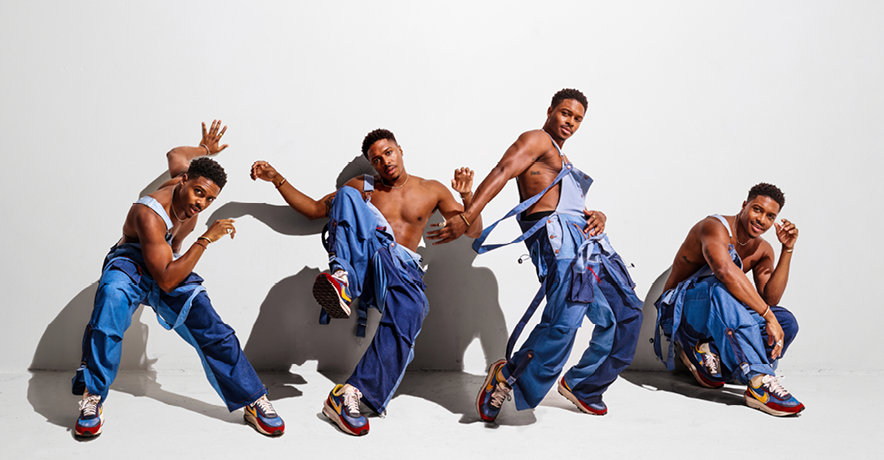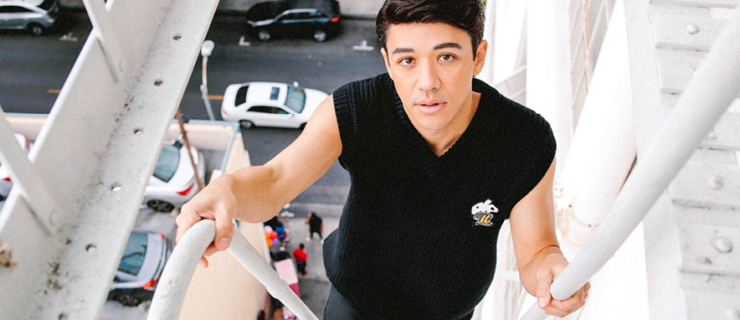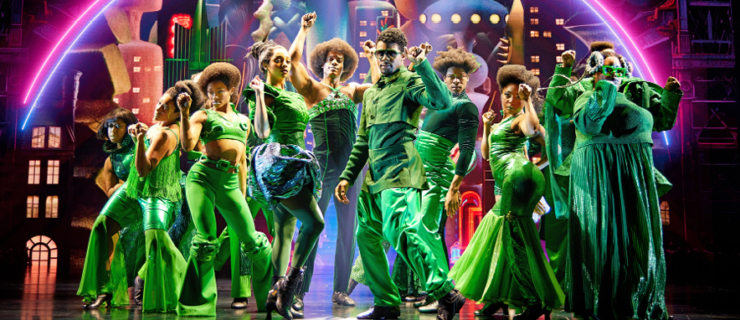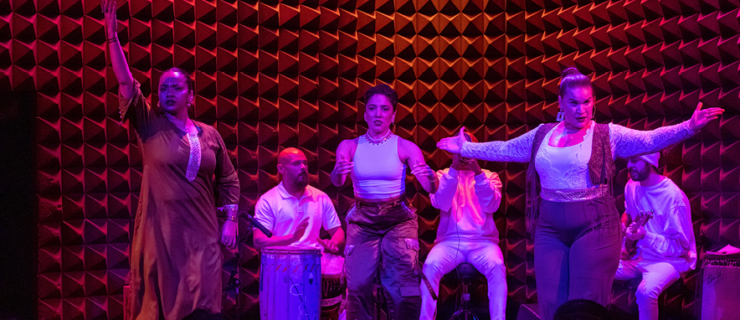Ephraim Sykes Is the Toast of Broadway and Beyond
His brilliant dancing and magnetic presence wowed Broadway in Ain’t Too Proud; landed him the lead (which he eventually relinquished) of MJ: The Musical; and will be on display in the title role of Tony Goldwyn and Savion Glover’s reimagined Pal Joey at New York City Center this month. But ask Ephraim Sykes for his story and he starts with, “My mother and father fell in love…”
You get the sense that Sykes, who arrived in New York in a U-Haul 20 years ago at 18, sees himself as something of a group enterprise. He studs his narrative with the names of people who’ve helped and shaped him, from his septuagenarian babysitters to the Broadway professionals who taught him the ropes.
His talent? It’s a Sykes-family thing. His career? A series of surprises. Pal Joey? More on that later. First, his story, after the parents fall in love.
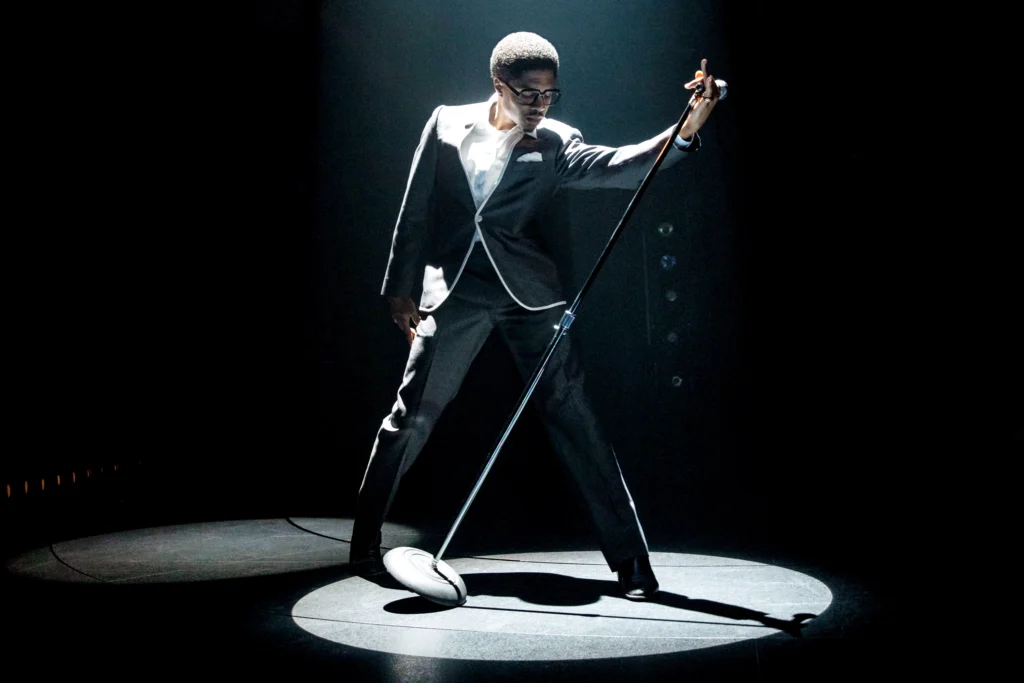
Sykes’ parents—a Baptist pastor and a schoolteacher—raised him in St. Petersburg, Florida. “Growing up in the Black Southern church,” Sykes says, “we were heavily immersed in the arts. Everybody sang, everybody danced, everybody played instruments.” He loved it, but it was his younger sister, Martina, now touring in The Lion King, who was the born performer. He “kinda tagged along and would peep in on some of her dance classes.”
Music was his first love, and his mother, who plays the drums, started teaching him when he was around 5. His father plays piano, French horn, and trumpet, and Sykes remembers the music that filled their home with a nostalgia that sets him aglow. “I was singing and playing and dancing since I could walk and talk,” he says. “And on the weekends doing our chores, they’d throw on all the old Motown records.”
Then a ballet teacher came to his fourth-grade band class in search of more toy soldiers and mice for The Nutcracker. “They forced me to go to this audition, and that became my first ballet class,” he recalls. Surprise number one: He was told he “had a natural talent.” So he went through the Pinellas County Center for the Arts’ arts magnet school program all the way through high school, studying both music and dance, and attending summer intensives at The Rock School for Dance Education in Philadelphia and at The Ailey School in New York City.
He didn’t get into Juilliard or any of the other colleges he was hoping for, and instead accepted the theater scholarship he’d been offered at Tennessee State, planning to join the marching band. Still, he couldn’t resist one last summer at Ailey, “just to dance and hang up my shoes.” Surprise number two: At the end, he was invited to join the incoming class at Ailey’s joint BFA program with Fordham University. “Just like that,” he says, snapping his fingers, “change of plans.”
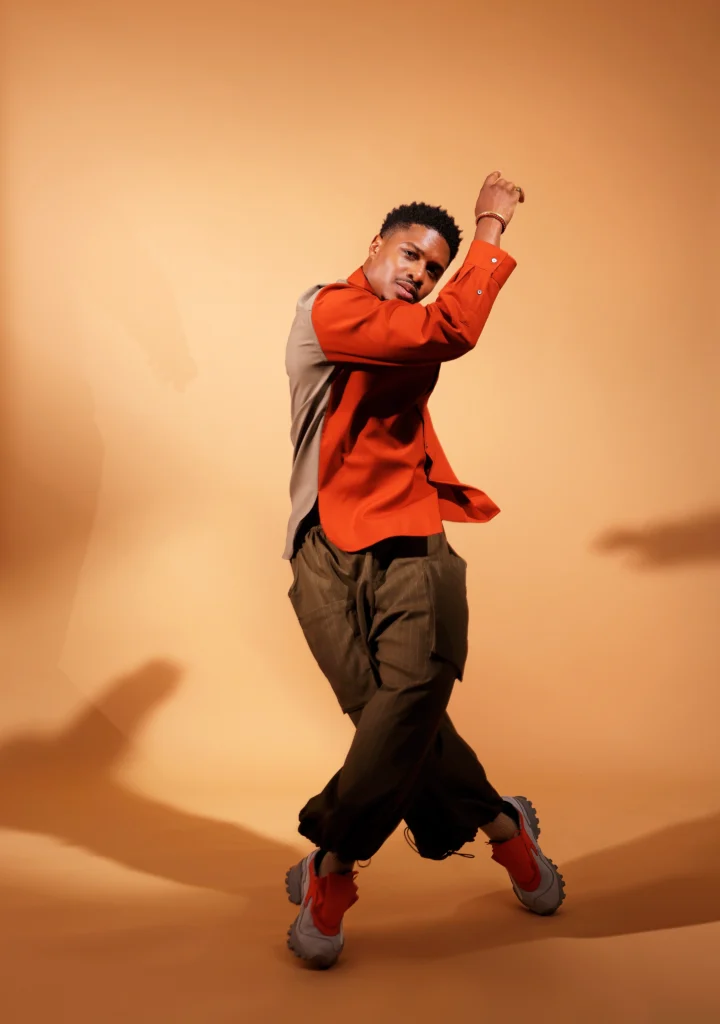
After graduating, Sykes toured with Ailey II for a second year, but didn’t get into the main company—or any others. “All these auditions, I’d do really well, but I never crossed that boundary. It’s like God was shutting the doors to the concert life on me, and I didn’t know why, or what to do,” Sykes says. His father came to the rescue. “He said, ‘Hey, stay a little longer,’ and he put a little more money into my bank account.”
Within that week came another surprise. James Brown III, who’d assisted when Darrell Grand Moultrie choreographed on Sykes at Ailey II, was now the dance captain at The Little Mermaid on Broadway. “He said, ‘Hey, there’s a guy leaving the show,’ ” Sykes remembers. “ ‘You’ll fit the costume. Why don’t you audition?’ ”
Broadway musicals were not on Sykes’ radar. “I had no clue,” he says, “no interest.” Then he went onstage in Little Mermaid. “I was like, ‘Oh, wait—this feels almost like a home.’ ” The company took him under their collective wing, teaching him how to manage his voice, how to manage the tap choreography, how to manage his salary, just how to manage.
With all that on-the-job learning came another realization: “Much as I love the Ailey choreography and the company, not being able to sing, not being able to play instruments, I always felt I was missing parts of myself.” He went on to exercise those parts in Memphis, Newsies, Motown: The Musical, Hamilton, and, of course, Ain’t Too Proud, while getting film and television work, too.
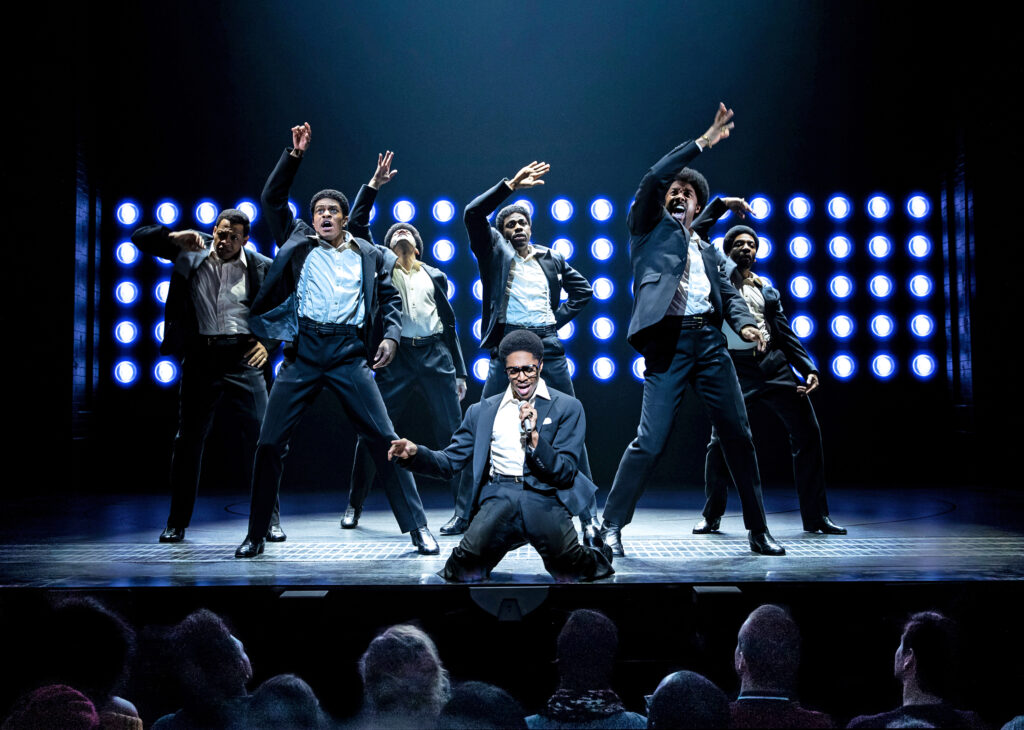
Choreographer Sergio Trujillo remembers Sykes’ Memphis audition distinctly. “I was like, ‘Who is that boy?’ He was like a colt, so athletic, with long limbs—when he took flight, it was beautiful to watch.” Working with him, Trujillo became equally impressed with Sykes as a person and as an artist. “We had the relationship and the trust where I could just lean into him and say, ‘Can you try this? Can you try that?’ That’s special.”
In 2019, Ain’t Too Proud earned them both Tony nominations. Trujillo won, Sykes didn’t. But Sykes’ tour de force performance as the Temptations’ most notable lead singer, David Ruffin, copped the Chita Rivera Award for best male dancer on Broadway. Trujillo says Sykes was more than dancing, singing, and acting the difficult role. The “quadruple threat,” Trujillo says, also brings “that other thing”: unmatched charisma.
Sykes’ magnetic presence helped him win the Michael Jackson role in 2019, right before COVID-19 taught him and everyone else in theater that surprises aren’t necessarily good. By the time MJ was getting back on its post-pandemic feet, Sykes was involved in another project—a film that has yet to be made—and he opted to stick with it, instead of returning to the role he’d done in the MJ workshop.
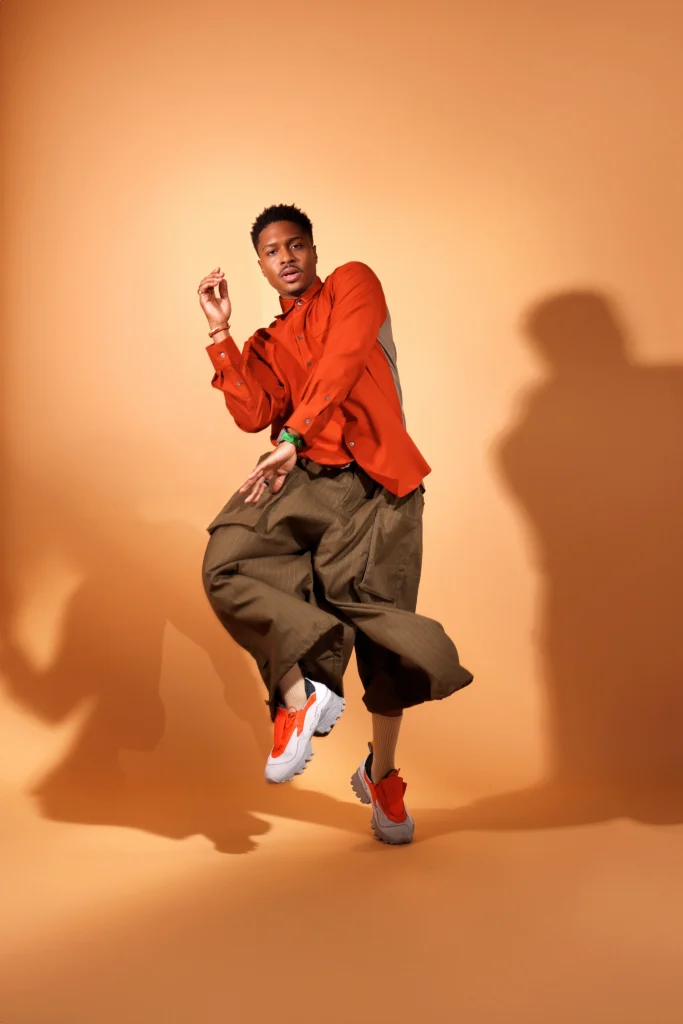
Which brings us to Pal Joey, giving seven performances November 1–5 as City Center’s annual benefit presentation. In 1940, despite the glorious Rodgers and Hart score and the presence of then-newcomer Gene Kelly in the title role, the musical opened to mediocre reviews—the usual explanation being that Broadway wasn’t ready for the cynicism and bad behavior of its sleazy hero. Since then, the show’s bumpy history has included a hit revival in 1952; a 1957 film starring Frank Sinatra; limited-run City Center revivals in the early ’60s with Bob Fosse as the heel; and a 2008 production with a new book that fared little better with the critics than the original.
Goldwyn and his friend and partner Richard LaGravenese got permission from the Rodgers and Hart estate to do yet another version, and to subtract or add Rodgers and Hart songs, which they did. Their idea, Goldwyn says, was to change Joey from “just a cad who sleeps with a lot of women” to “a true artist, a genuinely gifted man.” As they tinkered, Joey evolved into a Black jazz singer struggling to be heard in 1940s Chicago. But the show’s theme, Goldwyn notes, goes beyond race to “explore the human need to be seen. When your story is not being heard and you are invisible, that is a very painful way to live your life.” LaGravenese enlisted Daniel “Koa” Beaty to work with him on the book, and Goldwyn asked Glover—his “dream partner”—to choreograph and co-direct.
They chose Sykes to play this Joey because, Goldwyn explains, they needed someone “to be the star that everyone talks about him being in the story.” Then there was the dancing: “We needed a man who could hang with Savion Glover.”
Glover says Goldwyn’s name alone got him interested. But, he adds, “I was thinking the old Pal Joey. When I found out what was really going on, it turned into me having the opportunity to once again be part of a narrative that has been a part of my life. My story that is the story of Sammy Davis Jr.; my story that is the story of Chuck Green, Jimmy Slyde, Ben Vereen, Picasso, Frank Sinatra. This iteration of Pal Joey is a lot of cats that I know.”
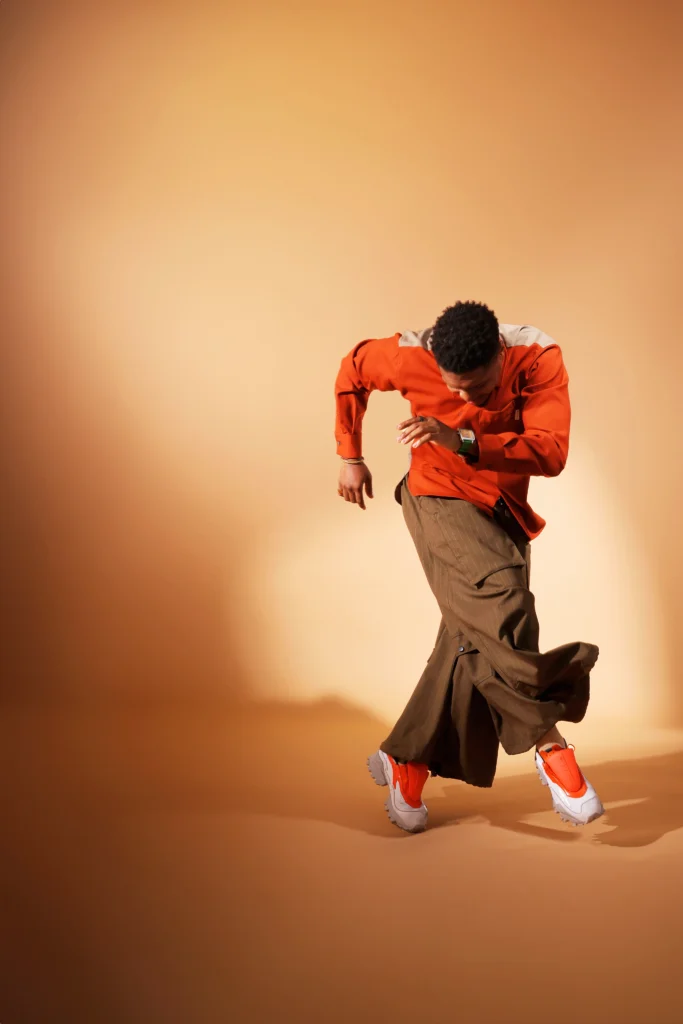
Sykes says Joey hits “very close to home” for him, too—“a young, hungry Black man out of the South trying to make it as a performer.” When he was asked to audition, he’d never seen Pal Joey and knew nothing about it, so he did some research. He feigns nonchalance as he describes his reaction: “Oh, there was a movie. Oh, Gene Kelly did this. No pressure.”
Needless to say, the dance in this production is pivotal. Glover promises it will “look like nothing I’ve seen myself or heard myself do,” while also including “everything” he knows. Sykes is a little less elliptical, but admits the choreography is hard to describe. “It feels like a coming together of a lot of different languages,” he ventures, “the main one being Savion’s hoofing and tap language meeting the world and the movement of that time period‚ especially Black folks. How we moved, how we walked, that whole energy, those steps that were popular in the ’40s in the Black community, in the juke joints.”
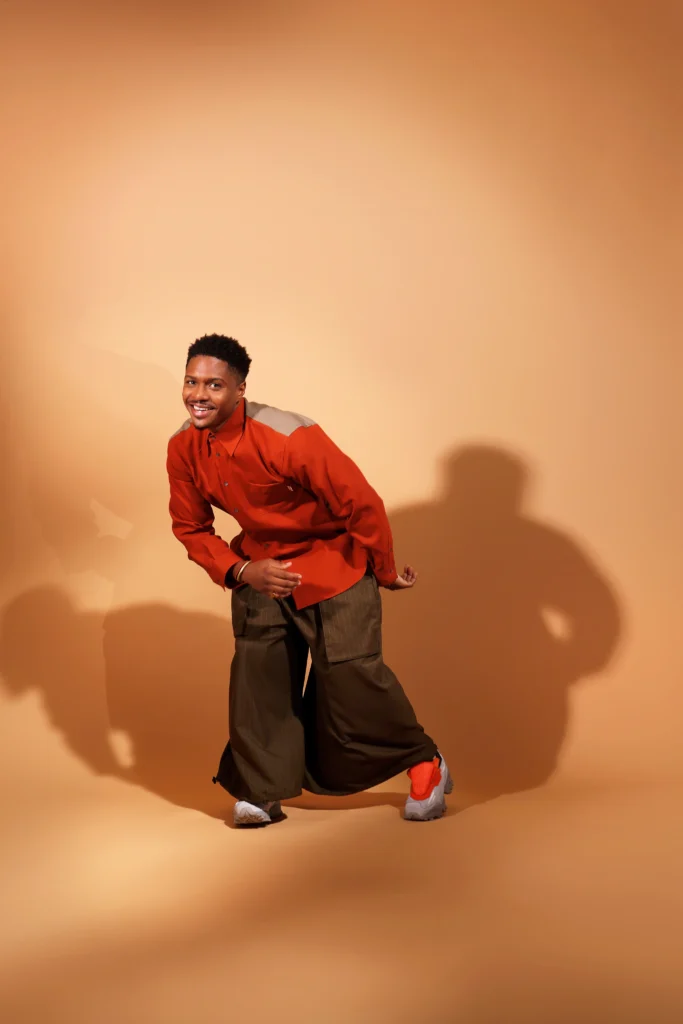
Talking about the show, Sykes is clearly awed. “Savion is teaching me this entirely different language, tying back to my ancestors, his ancestors, our African roots,” he says. “He’s able to communicate with his feet the thoughts that are in his mind. He’s one of the greatest to ever do it, and I’m having one-on-one sessions with this man!”
Sykes will probably stay a student always, but he also has something to teach. He and his sister, Martina, have started a college scholarship fund at their high school: the SykesKids Scholarships. When he goes back to give talks, he cites the unexpected turns his life has taken. “See the blessing in the closed door, and just stay open to where God is leading you,” he urges them. “Don’t get tunnel vision on your dreams.”
